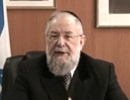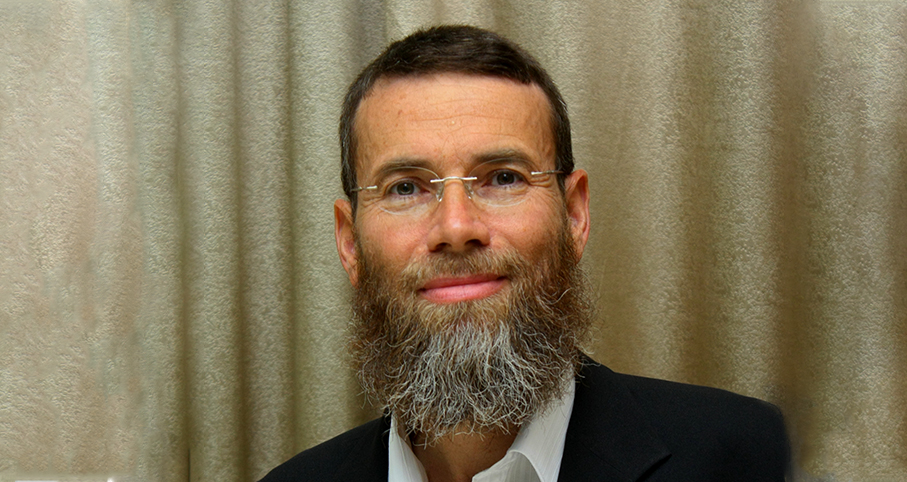Beit Midrash
- Jewish Laws and Thoughts
- Prayer
- Mentioning Rain
Question #1: Mixed Messages
"How can you have two shullen in the same city, one saying vesein tal umatar and the other not, on the same day?"
Question #2: South of the Border
"What do Buenos Aires, Melbourne, Montivedeo, Recife, and Wellington and Auckland, New Zealand, have in common, but not Johannesburg, Perth, and Santiago, Chile?"
Introduction
Last week, we discussed the unique halachic issues that surfaced when Jewish communities began settling in the southern hemisphere. We learned that the first published responsum on this question was authored by Rav Chayim Shabtai, who was the rav in Salonica until his passing in 1647, and whose responsa were published as Shu"t Toras Chayim. His undated responsum is addressed to someone inquiring about the practices of the Jewish community in Brazil, without identifying which city in the country. The questioner assumes that rain during their summer months between Sukkos and Pesach would be very harmful. Therefore, the Brazilian community wanted to recite mashiv haruach umorid hagashem and vesein tal umatar between Pesach and Sukkos and not recite them between Sukkos and Pesach.
We have previously discovered that the Rosh contended that, although in Eretz Yisroel rain is disadvantageous in the summer, in Europe, where he lived his entire life, rain was not only helpful in the summer, but it was essential. Since rain was important after Pesach, he felt that they should recite mashiv haruach umorid hagashem and vesein tal umatar even in the summer months. We also discovered that the Rosh was unsuccessful in changing the practice of his community, and that he, himself, eventually stopped reciting these prayers after Pesach. Although he had not changed his opinion, since he was unsuccessful in changing the accepted practice, he did not want there to be divergent approaches in the same community.
We also learned that the Shulchan Aruch (Orach Chayim 117:2) rules that the halacha does not follow the Rosh. He writes that all communities begin reciting mashiv haruach umorid hagashem on Shemini Atzeres and records only two practices regarding vesein tal umatar, the same two expressly mentioned in the Gemara. No other regional distinctions are recognized.
In addition, we noted that when someone recites mashiv haruach umorid hagashem or vesein tal umatar when he should not, he must repeat the davening. This presents us with the following intriguing question: Someone in Germany or Spain recites mashiv haruach umorid hagashem or vesein tal umatar during or after Pesach. According to the Shulchan Aruch, they have recited something that they should not have, whereas the Rosh contends that they have followed the correct procedure. The question is whether we accept the opinion of the Rosh to the extent of not repeating the shemoneh esrei in this situation. Rav Yitzchak Abuhav, a highly respected authority, contended that one should not repeat the shemoneh esrei out of respect for the Rosh’s position.
In his Beis Yosef commentary on the Tur, the author of the Shulchan Aruch was inclined to reject the Rosh’s ruling completely, to the extent of requiring the repetition of shemoneh esrei. However, because of the position of Rav Yitzchak Abuhav, the Beis Yosef modified his position, contending that someone who recited mashiv haruach umorid hagashem or vesein tal umatar in Spain or Germany on or after Pesach should repeat the shemoneh esrei as a donated prayer, called a tefillas nedavah, which one may recite when there is a question as to whether one is required to repeat the prayer. The Rema concludes, like Rav Yitzchak Abuhav, that one should not repeat the shemoneh esrei in this situation.
Melbourne, Australia, 1890’s
In the 1890’s, Rav Avraham Eiver Hirschowitz, whose origins were in Lithuania, became the rav of Melbourne. Upon Rav Hirschowitz’s arrival in Melbourne, he discovered that the local community was following the practice of the Toras Chayim: They were not reciting mashiv haruach umorid hagashem at all, and were reciting vesein tal umatar in shomei’a tefillah during the Australian winter between Pesach and Sukkos, and not reciting it at all during the months of Marcheshvan until Pesach. Rav Hirschowitz felt that this practice was an error in Australia, and immediately began addressing letters to several gedolei Yisroel regarding this practice. He explained that the Toras Chayim’s approach is based on the assumption that rain in the summer is detrimental, which he contended is not the case in Australia. Therefore, he concluded that Australia should follow the exact practice of everywhere else outside Eretz Yisroel and recite mashiv haruach umorid hagashem from Sukkos to Pesach, and vesein tal umatar in birchas hashanim, when everyone in chutz la’aretz does this.
Much of Rav Hirschowitz’s correspondence on the subject was published in his own work, Shu"t Beis Avraham. Apparently, Rav Hirschowitz was not in Melbourne for a long period of time, since it appears that he arrived there in 1892 and left in 1894. He writes in his introduction to Shu"t Beis Avraham that on Monday of parshas Devorim 5654 (1894), he left Australia by ship for the United States. He describes that one of his ports of call was Auckland, New Zealand, which at the time had a daily minyan and a Jewish community of some one hundred families. He also describes how they crossed the international dateline while en route, and he was uncertain what he should do regarding observing Shabbos while at sea. Rav Hirschowitz published his sefer in 1908, at which time he was a rav in Toledo, Ohio.
Why was the community following the ruling of the Toras Chayim? It appears that the community’s practice had originated with a question sent by them many decades earlier to Rav Shelomoh Hirschell, who had been the chief rabbi of the United Kingdom for forty years until his passing on Monday, the 31 st of October, 1842, or fifty years before Rav Hirschowitz’s arrival in Australia. To appreciate why Rav Hirschell’s opinion carried so much weight, let me share a small description of his funeral that was published shortly after his passing in The Occident and American Jewish Advocate, published in the United States: "Rav Shelomoh Hirschell was the Chief Rabbi of the Jews (after the German ritual), in London, the British provinces, and dependencies. [The term "after the German ritual" apparently means that he was viewed as the chief rabbi of the Ashkenazim, but not of the Sefardim.] The funeral took place on Wednesday. The morning was ushered in by every Jew in the metropolis, with those demonstrations of respect becoming so solemn an occasion; all places of business were closed, and the blinds in every private house were drawn down. The day being yom kippur katan, the eve of the new moon, it was observed as a fast by a larger number of persons than are accustomed to the observance. The taharah had been performed at a very early hour by the Dayanim, the executors, and a select number of the immediate friends of the deceased." The article continues to describe the loss felt by the community, and who were the maspidim.
Apparently, when the community in Australia first asked Rav Hirschell, he ruled that they should follow the practice as concluded by the Toras Chayim. At the time, this was probably the only published responsum on the question of reciting vesein tal umatar in the southern hemisphere. Therefore, the community refrained from reciting mashiv haruach umorid hagashem ever in their prayers. They refrained from doing so from Marcheshvan to Pesach because of concern that this was detrimental to their own needs.
We will never know why Rav Hirschell ruled that they should follow the approach of the Toras Chayim. Rav Hirschowitz’s approach appears to be what most authorities accept. For example, we find responsa on the subject from Rav Kook (Shu"t Orach Mishpat, Orach Chayim #24), Rav Tzvi Pesach Frank (Shu"t Har Tzvi, Orach Chayim #56), Dayan Yitzchok Weiss of Manchester and the Eidah Hachareidis (Shu"t Minchas Yitzchok 6:171), and Rav Betzalel Stern (Shu"t Betzeil Hachachmah 6:85), all of whom accept this approach also.
We should note that the two practices, that of the Toras Chayim and that of the Shulchan Aruch, do not dispute in halacha. The Toras Chayim ruled his way when there is a season locally in which rain is definitely detrimental. Since I have found no authority who disputes this ruling of the Rambam, as explained in our previous articles, I assume that, were this indeed the case, all would agree that one should refrain from reciting mashiv haruach umorid hagashem and vesein tal umatar when it would be detrimental, locally, for it to rain in this season.
South is very different
However, one major authority, Rav Shmuel Vozner of Bnei Braq, disagrees with this approach. In a responsum dated the 9 th of Kislev 5721 (1961) addressed to Rabbi Avraham Leitner, the rav of a community named Adas Yerei’im in Montivedeo, Uruguay, Rav Vozner disagrees with everyone since the time of the Toras Chayim, ruling that the discussions about the Gemara and the rishonim were germane only in the northern hemisphere, where the basic needs are for rain in the winter and some places might require rain even in the spring and summer. However, opines Rav Vozner, in the southern hemisphere, where the seasons are reversed, davening for rain between Sukkos and Pesach is tantamount to asking Hashem to change the climates completely and to make the southern hemisphere climates identical to the northern, which would, of course, be catastrophic. Therefore, Rav Vozner rules that, in the southern hemisphere, one should recite mashiv haruach umorid hagashem from Pesach until Sukkos, and daven for rain vesein tal umatar in birchos hashanim when it is appropriate there (Shu"t Shevet Halevi 1:21). It would stand to reason that, according to Rav Vozner’s approach, the prayers of tefillas geshem and tefillas tal should also be reversed -- southern hemisphere Jewry should recite tefillas geshem on Pesach and tefillas tal on Sukkos. In the ninth volume of Rav Vozner’s teshuvos, there is a lengthy responsum from his son, Rav Benzion Vozner, who served as a rav in Sydney, Australia, for six years, expanding and explaining his father’s position, which he himself advocates (Shu"t Shevet Halevi 9:148).
Halachic conclusion
Based on the entire discussion, I present five possible approaches one could follow regarding the recital of mashiv haruach umorid hagashem and vesein tal umatar in the southern hemisphere.
Rosh : Since these areas are regions and not just cities, the laws germane to both of these inserts in the davening should be dependent on local conditions. Although the Rosh himself held this way, as we have seen, the other halachic authorities did not accept his position.
Shulchan Aruch : The obvious reading of the Shulchan Aruch is that these communities should follow the same practice as is practiced in chutz la’aretz northern hemisphere communities.
Toras Chayim : Although he follows the general approach that I ascribed above to the Shulchan Aruch, he adds that in seasons when rain is unfavorable, one should omit mashiv haruach umorid hagashem and vesein tal umatar.
Rav Vozner : The entire discussion in early authorities is germane only to practices in the northern hemisphere, but in the southern hemisphere one should follow reverse practices, thus reciting mashiv haruach umorid hagashem and vesein tal umatar in its winter months, which correspond to the summer months in the northern hemisphere.
Lots of dew: Although I have not seen this position quoted in any halachic work, I have been told that there are individuals who follow an approach that makes sure that one will always fulfill the mitzvah of davening. All year long, they recite morid hatal in the second brocha of shemoneh esrei, and they recite vesein tal umatar in shomei’a tefillah whenever there is an opinion that one should recite vesein tal umatar. The advantage of this last approach is that one will never create a situation in which the prayer must be repeated.
What do they do?
While researching these questions, I sent out inquiries to various contacts I have who live or have lived in different southern hemisphere communities, asking them what is practiced in their various places. Here is what I discovered:
In general, the most common practice is to follow the approach that I called above that of the Shulchan Aruch, that one follows the schedule identically to what is done in the northern hemisphere.
In some places, indeed, we find different shullen following divergent approaches. When this is the situation, usually one congregation follows the standard, accepted approach of the Shulchan Aruch, whereas the other refrains from reciting vesein tal umatar or mashiv haruach umorid hagashem in its usual place, during the local summer. I will note that, logically, this should be true only in a place and season where rain is indeed detrimental to the locals.
Mixed Messages
At this point, we can address the opening questions of our article. Our first question was: "How can you have two shullen in the same city, one saying vesein tal umatar, and the other not, on the same day?"
One answer would be that we are describing two shullen located somewhere in the southern hemisphere, which are following differing piskei halacha as to what they should do. I am told that there are cities in which this is the case.
The second of our opening questions was: "What do Buenos Aires, Melbourne, Montivedeo, Recife, and Auckland, New Zealand, have in common, but not Johannesburg, Perth, and Santiago, Chile?"
Even someone who has followed all the fine points in our discussion will probably still not be able to answer this question, although he will realize that every one of these places lies in the southern hemisphere. Buenos Aires, Melbourne, Montivedeo, Recife, and Auckland, New Zealand all have in common that, in my research on this topic, I found each of these places to have been the basis of the question asked from a posek on this issue.
This Shiur is published also at Rabbi Kaganof's site

Should I daven for rain when we need it?
Rabbi Yirmiyohu Kaganoff | Cheshvan 9 5779

Davening for Rain in the Southern Hemisphere
Part 1
Rabbi Yirmiyohu Kaganoff | Cheshvan 16 5779

Practicing Saying “V’ten Tal U’Matar"
Rabbi Daniel Mann | Cheshvan 9 5776






















